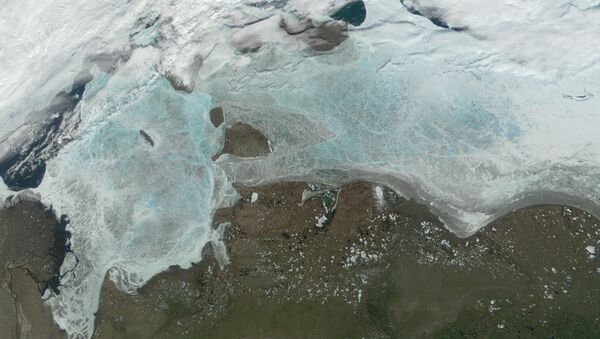Igor Semiletov, head of the Arctic Sea's Carbon Research International Lab at the Tomsk Polytechnic University, explained that global warming doesn’t mean that the weather will be getting warmer with each passing day, but rather that it means a steady increase of the global average temperature confirmed by the ongoing melting of glaciers and steady increase of the sea level, according to a statement posted on the university’s official website.
"Thing is, the climatic curve alternates between warm and cool periods. For example, the temperature level 10,000 years ago was about the same as it is now. But for the first time in modern geological history this cycle was ‘broken’. Right now we should be living during a cooling period, but the temperature level is increasing, not decreasing," he explained.
He also remarked that global warming accelerates the coastal area erosion of the Arctic seas, most notably in the Laptev Sea and in the East Siberian Sea.
"The speed of the coastal erosion observed at capes’ ice complexes is now at 20-30 meters in the summer, and whole islands are vanishing as a result. For example, in the time of our grandfathers Semyonovsky and Vasilyevsky islands were islands, but now they have turned into banks. About 40 kilometers of land were ‘devoured’ by coastal erosion during the last millennium or two," Semiletov said.
Meanwhile, Örjan Gustafsson, professor at Stockholm University, said that scientists need to thoroughly study and analyze the ongoing climatic processes and attempt to predict future climatic changes.


